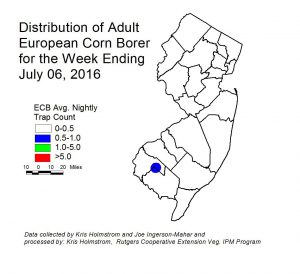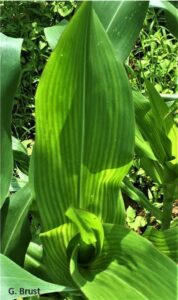Sweet Corn
The arrival of warmer temperatures should improve corn growth considerably. This same weather could bring on the first consistent European corn borer (ECB) catches, although this has not yet happened. No ECB were captured in blacklight traps this week. As the population develops, look for maps to be published in the weekly IPM Update. There were several corn earworm (CEW) captured in blacklights located in New Egypt, Folsom and Woodstown this past week, however these individuals are of little concern in the absence of silking sweet corn.
Cole Crops
IPM personnel continue to observe infestations of crucifer flea beetle. These beetles can build to high populations quickly, especially where wild mustard and related cruciferous weeds are common. Extreme feeding on small transplants can cause irreversible damage if not controlled promptly. [Read more…]


